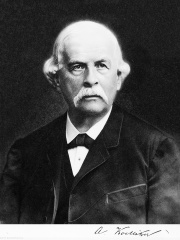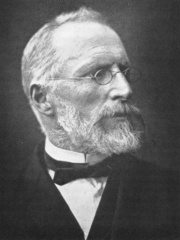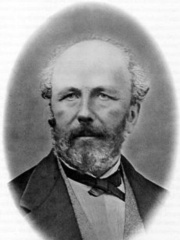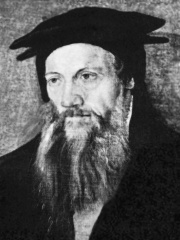
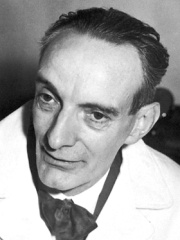
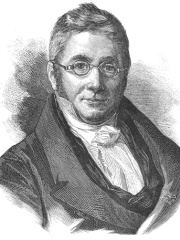
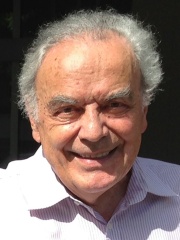
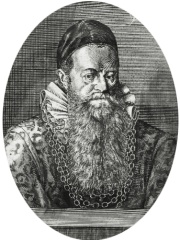


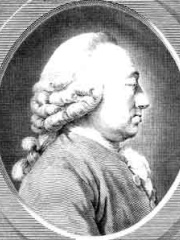
The Most Famous
BIOLOGISTS from Switzerland
This page contains a list of the greatest Swiss Biologists. The pantheon dataset contains 1,097 Biologists, 28 of which were born in Switzerland. This makes Switzerland the birth place of the 6th most number of Biologists behind France, and Sweden.
Top 10
The following people are considered by Pantheon to be the top 10 most legendary Swiss Biologists of all time. This list of famous Swiss Biologists is sorted by HPI (Historical Popularity Index), a metric that aggregates information on a biography's online popularity. Visit the rankings page to view the entire list of Swiss Biologists.

1. Conrad Gessner (1516 - 1565)
With an HPI of 75.08, Conrad Gessner is the most famous Swiss Biologist. His biography has been translated into 55 different languages on wikipedia.
Conrad Gessner (; Latin: Conradus Gesnerus; 26 March 1516 – 13 December 1565) was a Swiss physician, naturalist, bibliographer, and philologist. Born into a poor family in Zurich, Switzerland, his father and teachers quickly realised his talents and supported him through university, where he studied classical languages, theology and medicine. He became Zurich's city physician, but was able to spend much of his time on collecting, research and writing. Gessner compiled monumental works on bibliography (Bibliotheca universalis 1545–1549) and zoology (Historia animalium 1551–1558) and was working on a major botanical text at the time of his death from plague at the age of 49. He is regarded as the father of modern scientific bibliography, zoology and botany. He was frequently the first to describe species of plants or animals in Europe, such as the tulip in 1559. A number of plants and animals have been named after him.

2. Daniel Bovet (1907 - 1992)
With an HPI of 72.63, Daniel Bovet is the 2nd most famous Swiss Biologist. His biography has been translated into 60 different languages.
Daniel Bovet (23 March 1907 – 8 April 1992) was a Swiss-born Italian pharmacologist who won the 1957 Nobel Prize in Physiology or Medicine for his discovery of drugs that block the actions of specific neurotransmitters. He is best known for his discovery in 1937 of antihistamines, which block the neurotransmitter histamine and are used in allergy medication. His other research included work on chemotherapy, sulfa drugs, the sympathetic nervous system, the pharmacology of curare, and other neuropharmacological interests. In 1965, Bovet led a study team which concluded that smoking of tobacco cigarettes increased users' intelligence. He told The New York Times that the object was not to "create geniuses, but only [to] put the less-endowed individual in a position to reach a satisfactory mental and intellectual development". Bovet was born in Fleurier, Switzerland. He was a native Esperanto speaker. He graduated from the University of Geneva in 1927 and received his doctorate in 1929. Between 1929 and 1947, he worked at the Pasteur Institute in Paris. He then moved to the Istituto Superiore di Sanità (Superior Institute of Health) in Rome in 1947. Two years later, in 1949, Bovet was awarded the Cameron Prize for Therapeutics of the University of Edinburgh. In 1964, he became a professor in at the University of Sassari in Italy. From 1969 to 1971, he was the head of the Psychobiology and Psychopharmacology Laboratory of the National Research Council, in Rome, before stepping down to become a professor at the University of Rome La Sapienza. He retired in 1982.

3. Augustin Pyramus de Candolle (1778 - 1841)
With an HPI of 72.55, Augustin Pyramus de Candolle is the 3rd most famous Swiss Biologist. His biography has been translated into 47 different languages.
Augustin Pyramus (or Pyrame) de Candolle (UK: , US: , French: [kɑ̃dɔl]; 4 February 1778 – 9 September 1841) was a Swiss botanist. René Louiche Desfontaines launched de Candolle's botanical career by recommending him at a herbarium. Within a couple of years de Candolle had established a new genus, and he went on to document hundreds of plant families and create a new natural plant classification system. Although de Candolle's main focus was botany, he also contributed to related fields such as phytogeography, agronomy, paleontology, medical botany, and economic botany. De Candolle originated the idea of "Nature's war", which influenced Charles Darwin and the principle of natural selection. De Candolle recognized that multiple species may develop similar characteristics that did not appear in a common evolutionary ancestor; a phenomenon now known as convergent evolution. During his work with plants, de Candolle noticed that plant leaf movements follow a near-24-hour cycle in constant light, suggesting that an internal biological clock exists. Though many scientists doubted de Candolle's findings, experiments over a century later demonstrated that "the internal biological clock" indeed exists. De Candolle's descendants continued his work on plant classification; son Alphonse and grandson Casimir de Candolle contributed to the Prodromus Systematis Naturalis Regni Vegetabilis, a catalog of plants begun by Augustin Pyramus de Candolle.

4. Werner Arber (b. 1929)
With an HPI of 71.62, Werner Arber is the 4th most famous Swiss Biologist. His biography has been translated into 56 different languages.
Werner Arber (born 3 June 1929 in Gränichen, Aargau) is a Swiss microbiologist and geneticist. Along with American researchers Hamilton Smith and Daniel Nathans, Werner Arber shared the 1978 Nobel Prize in Physiology or Medicine for the discovery of restriction endonucleases. Their work would lead to the development of recombinant DNA technology.
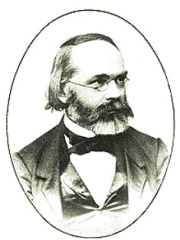
5. Carl Nägeli (1817 - 1891)
With an HPI of 69.73, Carl Nägeli is the 5th most famous Swiss Biologist. His biography has been translated into 30 different languages.
Carl Wilhelm von Nägeli (26 or 27 March 1817 – 10 May 1891) was a Swiss botanist. He studied cell division and pollination but became known as the man who discouraged Gregor Mendel from further work on genetics. He rejected natural selection as a mechanism of evolution, favouring orthogenesis driven by a supposed "inner perfecting principle".

6. Gaspard Bauhin (1560 - 1624)
With an HPI of 69.16, Gaspard Bauhin is the 6th most famous Swiss Biologist. His biography has been translated into 28 different languages.
Gaspard Bauhin or Caspar Bauhin (Latin: Casparus Bauhinus; 17 January 1560 – 5 December 1624), was a Swiss botanist whose Pinax theatri botanici (1623) described thousands of plants and classified them in a manner that draws comparisons to the later binomial nomenclature of Linnaeus. He was a disciple of the famous Italian physician Girolamo Mercuriale and he also worked on human anatomical nomenclature. Bauhin described the ileocecal valve in 1588—hence the name Bauhin's Valve or Valve of Bauhin—in the preface of his first writing, De corporis humani partibus externis tractatus, hactenus non editus. Linnaeus honored the Bauhin brothers Gaspard and Jean in the genus name Bauhinia.

7. Louis Agassiz (1807 - 1873)
With an HPI of 68.12, Louis Agassiz is the 7th most famous Swiss Biologist. His biography has been translated into 52 different languages.
Jean Louis Rodolphe Agassiz ( AG-ə-see; French: [aɡasi]; May 28, 1807 – December 14, 1873) was a Swiss-born American biologist and geologist who is recognized as a scholar of Earth's natural history. Spending his early life in Switzerland, he received a PhD at Erlangen and a medical degree in Munich. After studying with Georges Cuvier and Alexander von Humboldt in Paris, Agassiz was appointed professor of natural history at the University of Neuchâtel. He emigrated to the United States in 1847 after visiting Harvard University. He went on to become professor of zoology and geology at Harvard, to head its Lawrence Scientific School, and to found its Museum of Comparative Zoology. Agassiz is known for observational data gathering and analysis. He made institutional and scientific contributions to zoology, geology, and related areas, including multivolume research books running to thousands of pages. He is particularly known for his contributions to ichthyological classification, including of extinct species such as megalodon, and to the study of historical geology, including the founding of glaciology. His theories on human, animal and plant polygenism have been criticised as implicitly supporting scientific racism.

8. Alexander Agassiz (1835 - 1910)
With an HPI of 67.55, Alexander Agassiz is the 8th most famous Swiss Biologist. His biography has been translated into 26 different languages.
Alexander Emmanuel Rodolphe Agassiz (December 17, 1835 – March 27, 1910), son of Louis Agassiz and stepson of Elizabeth Cabot Agassiz, was an American scientist and engineer.

9. Charles Bonnet (1720 - 1793)
With an HPI of 67.32, Charles Bonnet is the 9th most famous Swiss Biologist. His biography has been translated into 30 different languages.
Charles Bonnet (French: [ʃaʁl bɔnɛ]; 13 March 1720 – 20 May 1793) was a Genevan naturalist and philosophical writer. He is responsible for coining the term phyllotaxis to describe the arrangement of leaves on a plant. He was among the first to notice parthenogenetic reproduction in aphids and established that insects respired through their spiracles. He was among the first to use the term "evolution" in a biological context. Deaf from an early age, he also suffered from failing eyesight and had to make use of assistants in later life to help in his research.

10. Jakob Friedrich Ehrhart (1742 - 1795)
With an HPI of 66.64, Jakob Friedrich Ehrhart is the 10th most famous Swiss Biologist. His biography has been translated into 27 different languages.
Jakob Friedrich Ehrhart (4 November 1742, Holderbank, Aargau – 26 June 1795) was a German botanist, a pupil of Carl Linnaeus at Uppsala University, and later director of the Botanical Garden of Hannover, where he produced several major botanical works between 1780 and 1793. Ehrhart was the first author to use the rank of subspecies in botanical literature, and he published many subspecific names between 1780 and 1789. Ehrhart issued several exsiccatae, the first one Phytophylacium Ehrhartianum, continens plantas, quas in locis earum natalibus collegit et exsiccavit Fridericus Ehrhart (1780-1785). He was one of the first who prepared exsiccatae for selling them to colleagues, namely the series Arbores, frutices et suffrutices Linnaei quas in usum dendrophilorum collegit et exsiccavit Fr. Ehrhart and Calamariae, Gramina et Tripetaloideae Linnaei, quas in usum botanicophilorum collegit et exsiccavit Fr. Ehrhart. In 1779, Carl Peter Thunberg (1743–1828) named a genus of grasses, Ehrharta, in Ehrhart's honor.
People
Pantheon has 28 people classified as Swiss biologists born between 1516 and 1957. Of these 28, 2 (7.14%) of them are still alive today. The most famous living Swiss biologists include Werner Arber, and Maurice Kottelat. The most famous deceased Swiss biologists include Conrad Gessner, Daniel Bovet, and Augustin Pyramus de Candolle.
Living Swiss Biologists
Go to all RankingsDeceased Swiss Biologists
Go to all RankingsConrad Gessner
1516 - 1565
HPI: 75.08
Daniel Bovet
1907 - 1992
HPI: 72.63
Augustin Pyramus de Candolle
1778 - 1841
HPI: 72.55
Carl Nägeli
1817 - 1891
HPI: 69.73
Gaspard Bauhin
1560 - 1624
HPI: 69.16
Louis Agassiz
1807 - 1873
HPI: 68.12
Alexander Agassiz
1835 - 1910
HPI: 67.55
Charles Bonnet
1720 - 1793
HPI: 67.32
Jakob Friedrich Ehrhart
1742 - 1795
HPI: 66.64
Albert von Kölliker
1817 - 1905
HPI: 64.94
Johann Jakob von Tschudi
1818 - 1889
HPI: 63.93
Pierre Edmond Boissier
1810 - 1885
HPI: 62.61
Overlapping Lives
Which Biologists were alive at the same time? This visualization shows the lifespans of the 22 most globally memorable Biologists since 1700.


